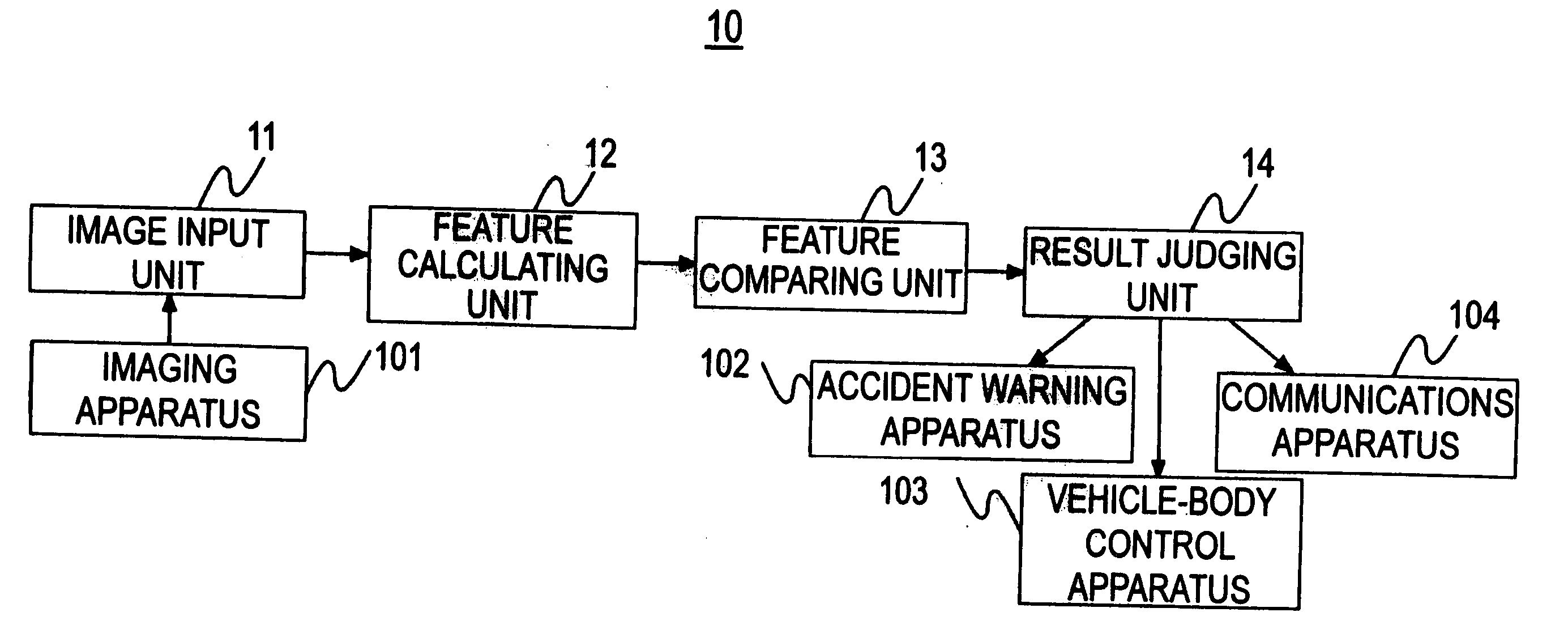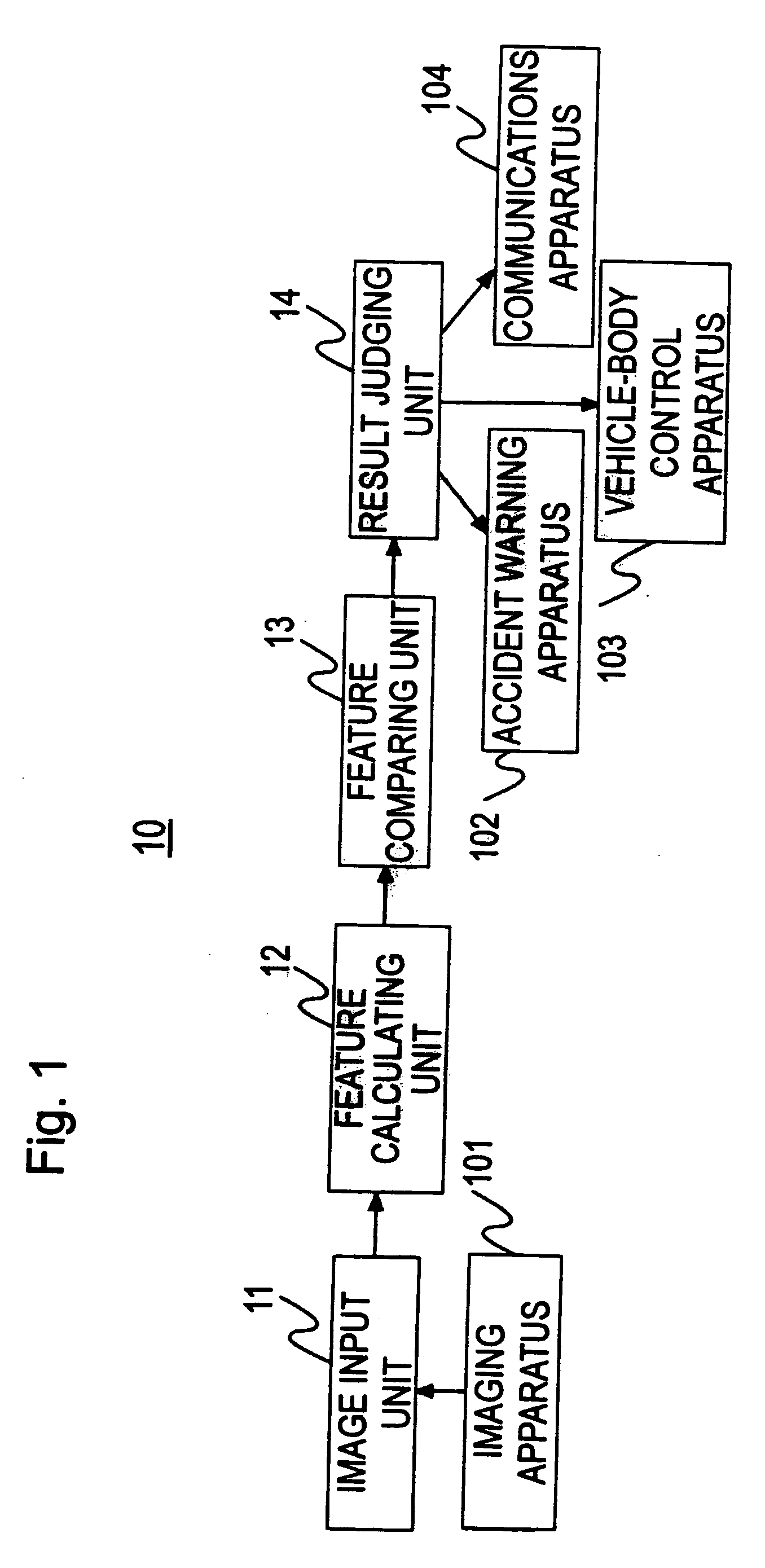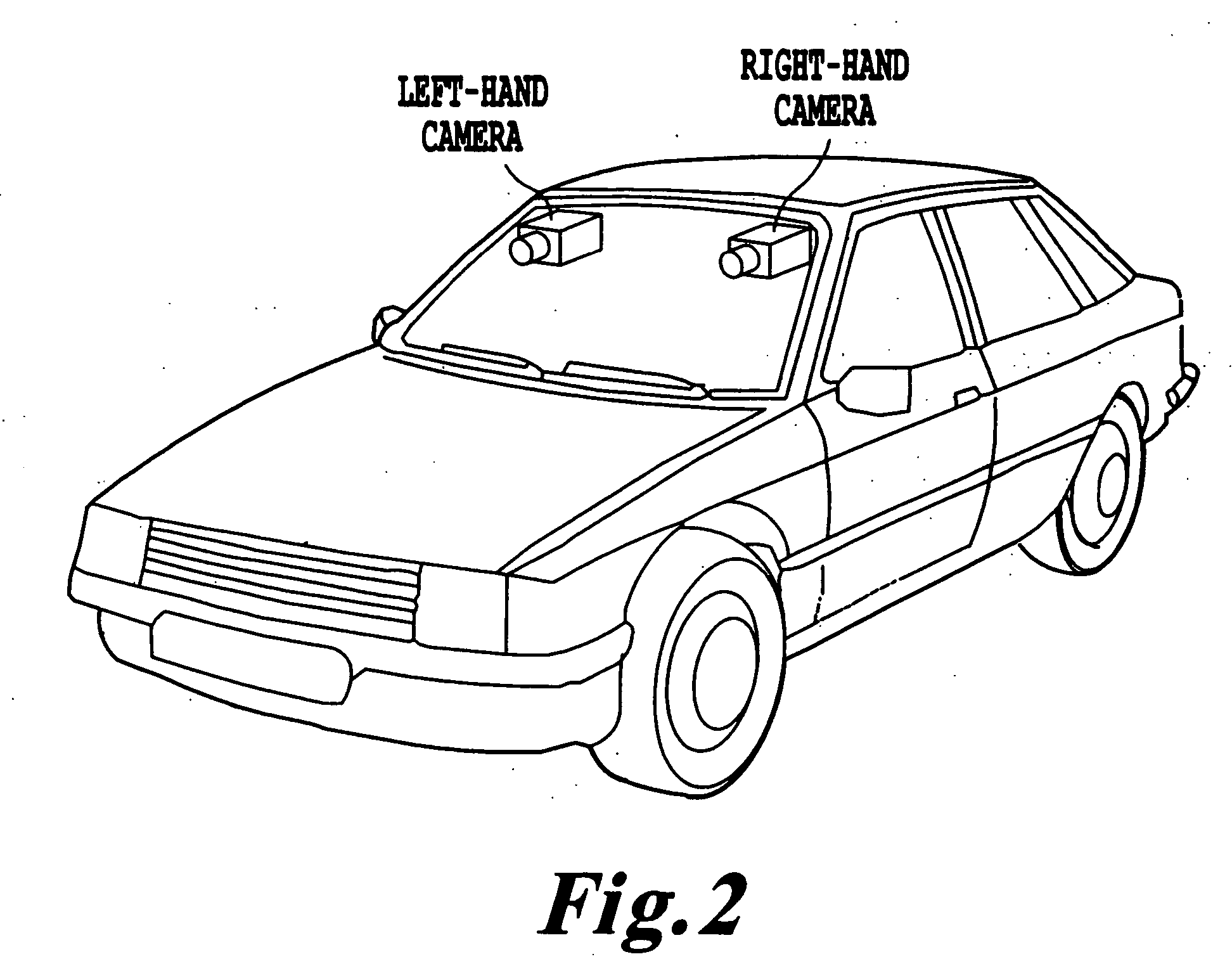Obstacle detecting apparatus and method
a technology of obstacle detection and apparatus, applied in the field of obstacle detection apparatus and method, can solve the problems of low detection resolution, inability to cover a sufficient measuring range, and difficulty in achieving a highly practical obstacle detection apparatus capable of operating with less erroneous detection, so as to reduce the occurrence of erroneous detection and improve the performance of the obstacle detection apparatus.
- Summary
- Abstract
- Description
- Claims
- Application Information
AI Technical Summary
Benefits of technology
Problems solved by technology
Method used
Image
Examples
first embodiment
[0030] An obstacle detecting apparatus 10 according to a first embodiment of the invention will now be explained with reference to FIGS. 1 through 5.
[0031]FIG. 1 is a view schematically showing an arrangement of the obstacle detecting apparatus 10 of the present embodiment.
[0032] The obstacle detecting apparatus 10 includes an image input unit 11, a feature calculating unit 12, a feature comparing unit 13, and a result judging unit 14.
[0033] Respective functions of these units 11 through 14 as described below are implemented by running a program stored in a computer, such as a personal computer.
(1) Image Input Unit 11
[0034] The image input unit 11 is supplied with images from an arbitrary imaging apparatus 101. The imaging apparatus 101 includes a plurality of image pick-up devices, such as CCD cameras, which are, for example, as shown in FIG. 2, attached to two portions at the right front and the left front of the vehicle.
[0035] The image input unit 11 sequentially converts a...
second embodiment
[0079] An obstacle detecting apparatus 20 according to a second embodiment of the invention will now be explained with reference to FIGS. 6 through 8.
[0080]FIG. 6 is a view schematically showing an arrangement of the obstacle detecting apparatus 20 of the present embodiment.
[0081] The obstacle detecting apparatus 20 includes an image input unit 21, a feature calculating unit 22, an indicator calculating unit 23, and a result judging unit 24.
[0082] As with the first embodiment above, the image input unit 21 is supplied with images from an arbitrary imaging apparatus 201 or the like. In the second embodiment, however, feature quantities of images obtained from a plurality of image pick-up devices need not be compared, and for this reason, the imaging apparatuses 201 do not necessarily include a plurality of image pick-up devices, and it may be sufficient to include only a single image pick-up device.
[0083] Also, the image input unit 21 and the feature calculating unit 22 of the pr...
first modification
(3) First Modification
[0112] Any value calculated through the use of an arbitrary indicator P obtained in the indicator calculating 23 can be used as the judging method.
PUM
 Login to View More
Login to View More Abstract
Description
Claims
Application Information
 Login to View More
Login to View More - R&D
- Intellectual Property
- Life Sciences
- Materials
- Tech Scout
- Unparalleled Data Quality
- Higher Quality Content
- 60% Fewer Hallucinations
Browse by: Latest US Patents, China's latest patents, Technical Efficacy Thesaurus, Application Domain, Technology Topic, Popular Technical Reports.
© 2025 PatSnap. All rights reserved.Legal|Privacy policy|Modern Slavery Act Transparency Statement|Sitemap|About US| Contact US: help@patsnap.com



